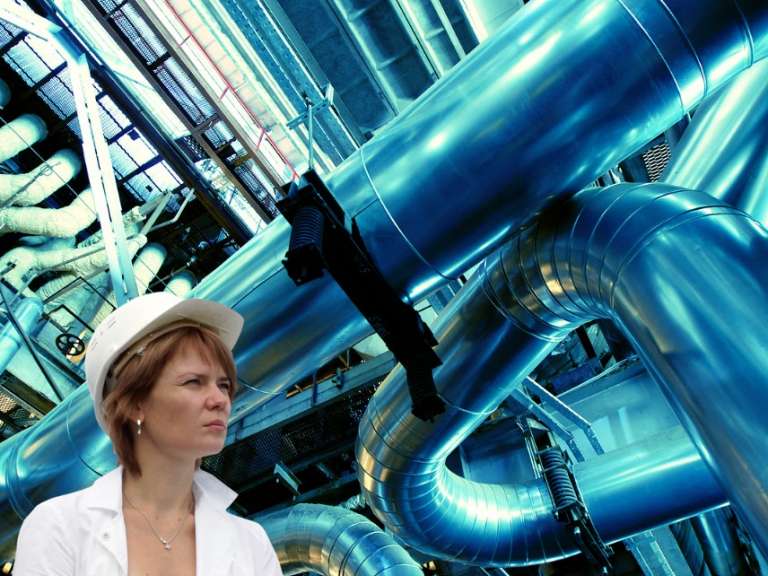Women in Power: Inspiring Stories of Females at the Top of Their Industry
Penny HitchinThere is clear evidence linking the presence of more women in the boardroom to increased profitability, ROI, and innovation.

There is clear evidence linking the presence of more women in the boardroom to increased profitability, ROI, and innovation. The power industry has traditionally been male dominated—so what does it take for women to get to the top? To understand that and provide encouragement for aspiring young women in the industry, here's a snapshot of some powerful women in power and energy.
One outstanding US example is Debra L. Reed, chairman of the board and chief executive officer of Sempra Energy, a San Diego-based energy company that operates gas-fired power plants, pipelines, and storage facilities. Ms. Reed entered the energy industry in 1981 with a bachelor's degree in civil engineering. Since then, she has worked her way up through a variety of roles and responsibilities to become the CEO of a company with $41.1 billion in assets and operating revenues of over $10 billion. Sempra Energy employs 17,000 people in the United States, Mexico, Chile, and Peru. The impressive Ms. Reed has collected a host of business accolades and consistently ranks as one of Fortune's "Most Powerful Women in Business."
The power and energy sector is undergoing immense change. Diversity of thought is key to navigating this change and turning challenge into opportunity. Dorothy Thompson is one of the United Kingdom's most powerful women in power and energy. For 12 years, she has been the chief executive of Drax Group, which runs the UK's largest power station. During this time, she has dramatically transformed the company's operations. It was once Europe's biggest coal power plant; now, it's Europe's biggest biomass plant. Drax invested billions of pounds to convert three of its coal-fired generators to burn wood pellets, mostly imported from North American forests. As government support for biomass dries up, Drax is making another strategic shift to adapt to life after coal, recently acquiring four gas power stations. It is also looking to buy more wood pellet plants in the US. Ms. Thompson is one of a handful of women leaders in the business. Her background is in economics and finance rather than engineering, but she clearly complements this with a profound understanding of technology and energy politics.
Other women in senior leadership are few and far between. The UK's first female director of a nuclear power station was Gwen Parry-Jones. She began her career as a reactor physicist and became the plant manager for the UK's only PWR site at Sizewell B in 2007. A year later, she was appointed the station director at Heysham 1 nuclear power station, becoming the first woman in the UK to hold either of these posts.
Not many power plant managers go on to become CEO—or the president of their country. Kersti Kajuliad was the director of Estonia's Iru Power Plant from 2002–2004. The combined heat and power plant runs on natural gas with oil as a reserve fuel. Ms. Kajuliad became the fifth president of Estonia in 2016 and the first woman to be president since the country declared independence in 1918.
Israel Electric Power Corporation's (IEC) Rutenberg Power Station employs 530 people, of whom only 26 are women. One of them, Rinat Avrahami Karniel, is the head of the power plant. The coal-powered plant is one of IEC's largest and supplies a sixth of Israel's power. Ms. Avrahami Karniel has two master's degrees and joined the IEC 20 years ago. She has worked in many positions in the company, the most recent being the operating engineer and interim director at the Ramat Hovav site.
Young Canadian entrepreneur Ann Makosinski is the inventor of the award-winning Hollow Flashlight, which uses body heat to provide light. The teenager came up with the idea after discovering that a friend in the Philippines was failing in school because she didn't have enough time to study during daylight hours, and the family had no electricity at home.
Ms. Makosinski's invention converts radiant body heat into electricity to power an LED bulb. Notably, this means there is no need for an external source of energy such as a battery or solar power. The gadget's hollow aluminum tube cools Peltier tiles at the sides of the flashlight's cylinder. The tiles produce electricity when the temperature differential between the two sides is five degrees Celsius. Ms. Makosinski added a transformer and a circuit to her invention, enabling it to supply five volts of alternating current. It has an indefinite lifespan and no moving parts. The tiles are built into the flashlight casing to absorb heat from a person's hand, while the cooler ambient air on the inside of the flashlight creates the temperature differential.
The young inventor made her prototype in the school laboratory for a cost of $26. Ms. Makosinski's interest in experimenting started at an early age. "I was always taking garbage from around the house, taking things apart and putting them together. I just wanted to make things better," she told Capital Finance International.
Getting more women into power at all levels benefits business, society, and individuals. Role models are few and far between, but those who do succeed are truly an inspiration. These snapshots prove that there is definitely a place for powerful and enterprising women in the energy industry.
With coal-fired power plants achieving an average 33 percent efficiency, it's crucial to build advanced HELE plants to reduce global carbon emissions.
Power plant managers should keep watch for energy industry trends in 2017: rise of distributed generation, fuel mix changes, digital technology, and more.
Getting to zero: How Japan is using HELE coal plants to reduce future coal emissions to near zero